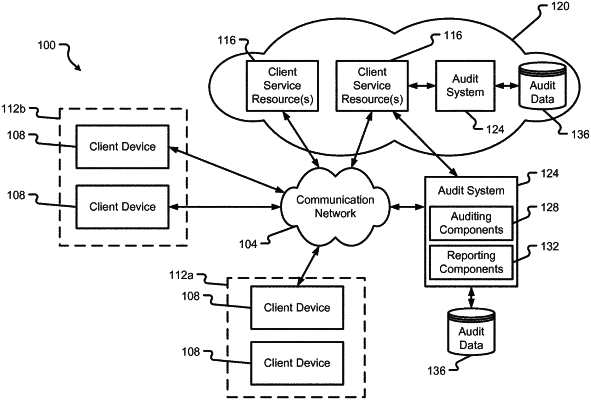| CPC H04L 9/3239 (2013.01) [G06F 9/547 (2013.01); G06F 16/2379 (2019.01); G06F 21/64 (2013.01); H04L 9/3247 (2013.01); H04L 63/0457 (2013.01); H04L 9/50 (2022.05)] | 20 Claims |

|
1. A method for maintaining a log of events in a shared computing environment, the method comprising:
receiving, at an audit trail adapter provided on an audit server, one or more raw data streams from the shared computing environment that include transactions conducted in the shared computing environment by a first entity, a second entity that is different from the first entity, and a third entity that is different from the first entity and the second entity;
creating, by the audit trail adapter, based on the received one or more raw data streams, a first blockchain entry for a first transaction conducted in the shared computing environment for the first entity;
creating, by the audit trail adapter, based on the received one or more raw data streams, a second blockchain entry for a second transaction conducted in the shared computing environment for the second entity, wherein the second blockchain entry includes a signature that points to the first blockchain entry;
creating, by the audit trail adapter, based on the received one or more raw data streams, a third blockchain entry for a third transaction conducted in the shared computing environment for the third entity, wherein the third blockchain entry includes a signature that points to the second blockchain entry; and
causing the first, second, and third blockchain entries to be written to a common blockchain data structure in a database that is made accessible to the first entity, the second entity, and the third entity;
wherein the third entity is capable of determining that the second blockchain entry exists in the common blockchain data structure but is unable to access any payload in the second blockchain entry, and wherein the third entity is incapable of determining that the first blockchain entry exists in the common blockchain data structure because the third blockchain entry does not point to the first blockchain entry.
|